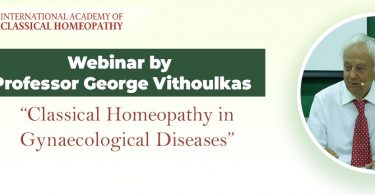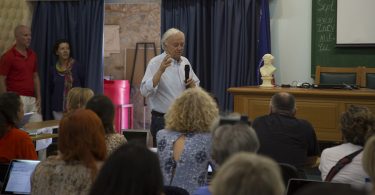Progress and development of Homoeopathy can be attributed to different stalwarts who enriched it with their knowledge, experiences and experiments. One such stalwart of Homoeopathy was Dr. Richard Hughes. Dr. Richard Hughes was born on 20th August, 1836 in London, England to Mr. Philip Hughes and Mrs. Emily Hughes. A firm believer of Law of Similia treatment, Hughes always tried to bring a change in Homoeopathy. He was an allopath who later converted to Homoeopathy. He always persuaded his allopathic acquaintances to convert to Homoeopathy and join him in developing and propagating Homoeopathy. Many times, he was misunderstood especially regarding his views on practice of Homoeopathy. Though he has his differences but he was just a dedicated and hardworking Homoeopath. His belief and dedication to Homoeopathy did not falter till his last breath and he continued to spread and enrich Homoeopathy in every possible way he can.
A learned physician
Richard Hughes was a great learner and it can be inferred by his much-earned degrees like M.R.C.S. from England and L.R.C.P. from Edinburgh, Scotland. He took his M.D degree from American College in 1860 but later converted to Homoeopathy and started practicing Homoeopathy at Brighton Homoeopathic Dispensary. He lived in Brighton with his wife Sarah and his six children.
While practicing Homoeopathy, Hughes realized there should be many newer practically important aspects to be incorporated in Homoeopathy. Thus, he tried to introduce new field in Homoeopathy based on more of research and pathology. Hughes’s philosophies were clear and distinct. He laid importance in establishing relationship between disease pathology and drug pathogenesis.He had great respect for Master Samuel Hahnemann for his relentless efforts for establishing Homoeopathy against all odds but he challenged some strong and basic concepts of Homoeopathy like the psora theory, theory of chronic disease, theory of vital force and even drug dynamization. He has written vividly about Hahnemann in his book ‘Hahnemann as a Medical Philosopher’ in 1881.
Hughes – The Researcher
Richard Hughes was very much influenced by 19th century discoveries of cellular science. Hughes wanted to introduce the revolutionary scientific discoveries of his time to Homoeopathy. His such efforts can be seen in his very first work ‘A Manual of Pharmacodynamics’. It was published in 1867 as the first part of the ‘Manual of Homoeopathic Practice for students and beginners.’ He also encouraged conducting experiments on animals in this book. He continued to enrich each of its subsequent editions with recent research and development that took place in field of drugs used in Homoeopathy.
Hughes was requested by the British Homoeopathic Society to deliver a course of lectures in London on Materia Medica and Therapeutics in 1875. These delivered lectures became the revised content for its Third Edition. In 1877, he was called upon by London School of Homoeopathy to head the department of Materia Medica and Therapeutics. These lectures became the new revised and augmented content of the fourth and final edition of Manual of Pharmacodynamics. Amidst all this, in 1876, he also became the Permanent Secretary of the “International Congress of Homoeopathy Physicians, Philadelphia”.
Hughes published ‘A Cyclopaedia of Drug Pathogenesis’ in 1887in which he removed all the symptoms of drug proving above 6C potency. He even gave less importance to clinical symptoms which were also excluded from his work. He highly praised the symptoms obtained by drug proving on healthy human beings. He appreciated Hahnemann for bringing drug proving into medical use after Von Haller. Hughes referred symptoms of Materia Medica Pura and Chronic Diseases in his book but did not include their symptoms because of lack of prover’s daybooks.
Hughes – The homoeopath
Richard Hughes had a great reputation among Homoeopaths despite disagreeing on many of the principles of Homoeopathy. Hughes was a low potency prescriber. His frequently used potency was 3X because of which he was also called as 3Xer or a half homoeopath. Dr. Hughes at one point of time was supposedly so powerful that, it was believed that it is difficult to sustain in Homoeopathy if you are not in good terms with Hughes. One such physician who faced this discrimination was Dr. J C Burnett. Dr. J H Clarke who was the closest disciple of Richard Hughes, also left his side and went on to join the Anti-Hughes group of Burnett, Cooper and Skinner. But Richard Hughes’s work and contribution to Homoeopathy was beyond such pettifoggery.
Great need for change in way how Materia Medica was taught was felt and addressed by Dr. Yeldham at British Homoeopathic Congress in 1880. In 1884, a conference was held which was attended by Richard Hughes on request of British Homoeopathic Society. At conclusion of conference, a set of 9 instructions were adopted by American Institute of Homoeopathy and subsequently by British Homoeopathic Society for formation of ‘Cyclopaedia of Drug Pathogenesy’. Several works of Homoeopaths across the world were considered and they all were acknowledged in all the 4 volumes of the work. The book was intended mainly for students of Homoeopathic Materia Medica. It provided compilation and reference to different kinds of toxicological and research work in relation to the drugs used in Homoeopathy.
Hughes was appointed as the editor of eminent journal “The British Journal of Homoeopathy” in 1889. He assisted Dr. T. F. Allen in preparing 10 volumes of ‘Encyclopaedia of Pure Materia Medica’ which was published in 1874. He also extended his great help to Dr. R. E. Dudgeon in translating Samuel Hahnemann’s ‘Materia Medica Pura’ into English. Hughes’s last work was ‘The principle and Practice of Homoeopathy’ which was published posthumously in 1902. Dudgeon took the responsibility of publishing the book and wrote Foreword for the book. First fourteen lectures of the book are dedicated to origin and development of Homoeopathy followed by Homoeopathic treatments of all diseases in nosological terms. Hughes has enriched it with experience of his own medical practice along with experiences of other physicians other than Homoeopath also, which seemed to him of any Homoeopathic importance.
Conclusion
Homoeopathy gets defame for lack of development in fundamental science, in-vitro and in-vivo research. Dr. Richard Hughes sensed this quite before seeing the rapid development taking place in field of science in late 19th century. If he would have been successful in igniting the minds of Homoeopaths for research in Homoeopathy then today Homoeopathy would have been richer in research fields also along with clinical enrichment. Richard Hughes was one amongst the few who witnessed the reburial of Hahnemann’s body at Père Lachaise Cemetery in 1898.Hughes passed at 66 years of age on 9 April, 1902.





